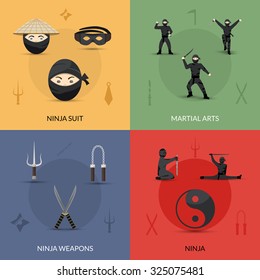The Evolution And Historic Relevance Of Martial Arts Across Different Societies
The Evolution And Historic Relevance Of Martial Arts Across Different Societies
Blog Article
Article Produced By-Padilla TRUE
Martial arts have a fascinating background that spans centuries and continents. You may find it interesting exactly how ancient techniques like Shuai Jiao and Kalaripayattu prepared for modern combat methods. These techniques not just stress physical skills but likewise reflect the societies that birthed them. As you discover their advancement, take into consideration how globalization has actually changed these standard types right into crossbreed styles. What impacts do you believe have formed today's martial arts landscape?
Ancient Martial arts: The Foundations of Battle
As you explore the globe of ancient martial arts, you'll uncover the abundant foundations that formed combat strategies across societies. martial arts videos for beginners concentrated on Self-Defense and survival, often incorporating strikes, grappling, and weapons.
In old China, for example, techniques like Shuai Jiao emphasized throws and joint locks, while India's Kalaripayattu showcased dexterity and liquid motion. Japanese samurai developed Kenjutsu, a polished swordsmanship that highlighted technique and method.
These martial arts offered not just for fight however likewise as a way of individual growth, instilling values like regard and determination. The blending of these methods gradually laid the groundwork for the varied martial arts you see today, each reflecting the unique viewpoints and requirements of its culture.
The Social Influence on Martial Arts Growth
While martial arts commonly mirror the functional requirements of a society, they also symbolize the cultural values and ideas of their origins. When you check out different martial arts, you'll see how they're influenced by faith, viewpoint, and social standards.
For instance, the focus on regard and discipline in Japanese martial arts originates from Zen Buddhism and samurai culture. On the other hand, Brazilian Jiu-Jitsu promotes adaptability and approach, shaped by the need for performance in a diverse, multicultural setting.
You may locate that the routines, uniforms, and training techniques show an area's background and identity. By understanding these social influences, you strengthen your admiration of martial arts and their role in shaping human experiences around the world.
Modern Adaptations and the Globalization of Martial arts
Martial arts have changed considerably in recent decades, adapting to contemporary culture and worldwide impacts. martial arts for older people 'll discover that typical types have mixed with modern-day methods, developing hybrid styles like mixed martial arts. These adaptations satisfy diverse target markets, making martial arts obtainable and attractive around the world.
With look at here now of social media sites and digital platforms, you can locate tutorials and competitors from all edges of the world, breaking geographical obstacles. This globalization has resulted in a common appreciation for different disciplines, from Brazilian Jiu-Jitsu to Taekwondo.
As you involve with these arts, you'll realize they're not nearly fight; they advertise fitness, self-control, and psychological well-being.
Ultimately, modern adaptations have actually enhanced the martial arts landscape, making it a vibrant and evolving practice.
Verdict
In checking out the history and development of martial arts, you uncover an interesting mix of strategies, cultures, and viewpoints. From ancient techniques like Shuai Jiao and Kalaripayattu to the contemporary versatility seen in mixed martial arts, martial arts reflect mankind's pursuit for Self-Defense and individual growth. As you engage with these techniques, you not just get abilities but also a deeper gratitude for the diverse customs that form our world today. So, proceed your trip and embrace the art of combat!
